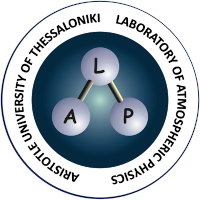The Weather Research and Forecasting (WRF) v4.4 is used to simulate eight severe precipitation events over the German states of Schleswig–Holstein and Baden–Wurttemberg, exceeding the German Weather Service’s warning level 3. A total of 1440 simulations were performed by combining 10 microphysics (MP) schemes, 6 cumulus (CU) schemes, 8 event cases, and 3 spatial configurations. The model configurations include a single domain with a grid size of 9 km and two two–way nesting approaches with spatial resolutions of 9 km and 3 km. To assess the impact of an active convection scheme on the model’s performance in the convective “gray zone” (GZ) and to evaluate the forecasting added value resulting from the increase in spatial resolution, simulations with and without the implementation of convection schemes for the 3 km domain were examined. The fifth generation ECMWF reanalysis (ERA5) dataset is employed to provide the initial and boundary conditions. Performance comparison is conducted pairwise for each combination as well as for a total ensemble. The Technique for Order of Preference by Similarity to Ideal Solution (TOPSIS) multi–criteria technique is used for performance assessment and ranking of the parametrization combinations employed. The results of the study at 3 km spatial resolution indicate that while non–convection–permitting (non–CP) simulations (i.e., simulations with convection parameterization turned on) generally enhance performance for summer rainfall events, winter episodes perform equally well in both convection–permitting (CP, i.e., simulations with convection parameterization turned off) and non–CP setups. Increasing the spatial resolution from 9 to 3 km does not consistently improve predictive capacity. Regardless of the setup, the optimal parameterizations at 9 km resolution outperform those at 3 km.
Stergiou I., N. Traka, D. Kaskaoutis, E. Tagaris, R. E. Sotiropoulou
Theor Appl Climatol 156, 196 (2025).,2025


